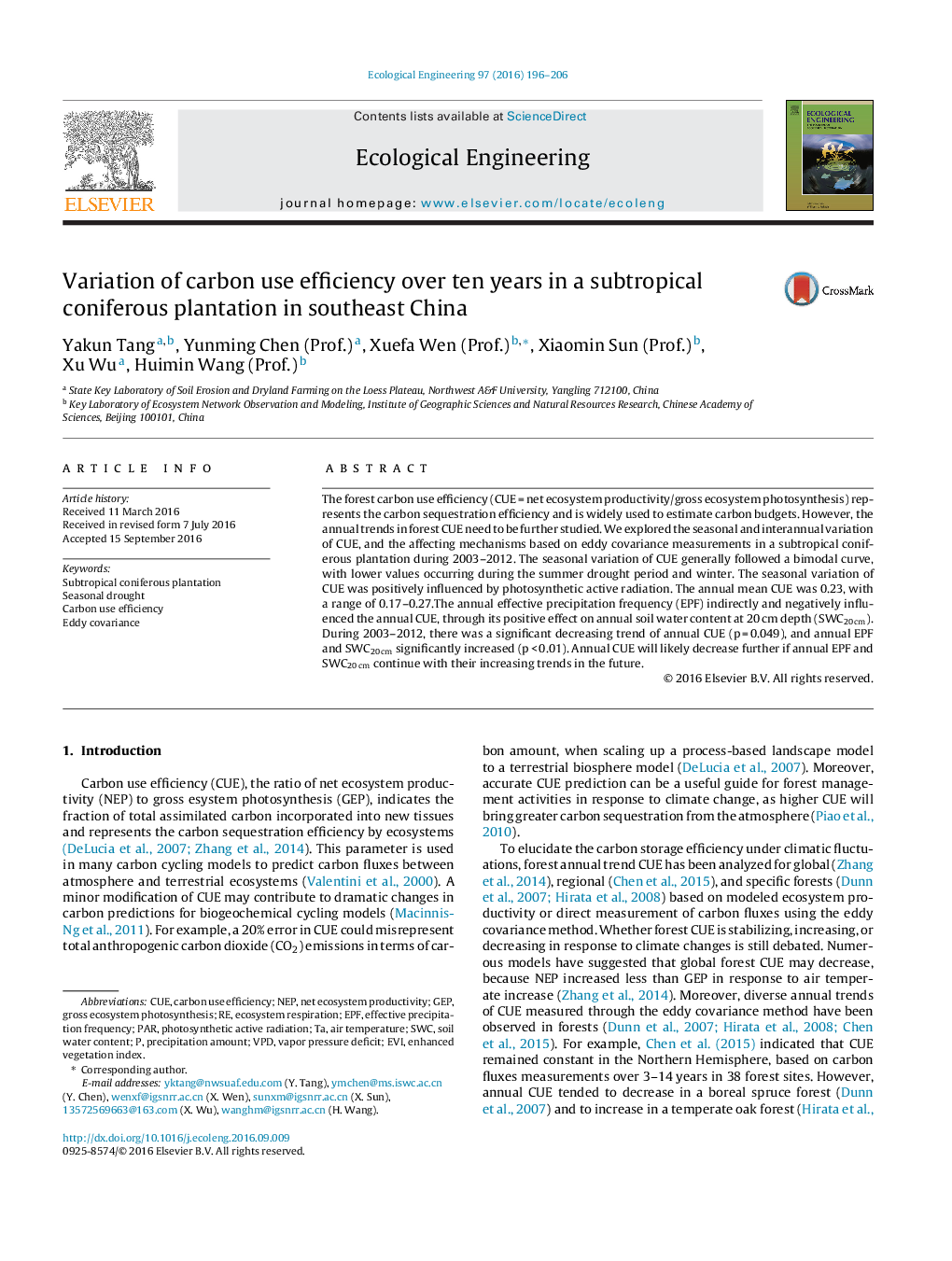| Article ID | Journal | Published Year | Pages | File Type |
|---|---|---|---|---|
| 4388380 | Ecological Engineering | 2016 | 11 Pages |
•Seasonal variation of CUE generally followed a bimodal curve.•Precipitation frequency rather than precipitation amount indirectly influenced CUE.•The annual CUE will likely decrease further as precipitation frequency increased.•Future CUE models need to consider precipitation frequency and soil moisture effects.
The forest carbon use efficiency (CUE = net ecosystem productivity/gross ecosystem photosynthesis) represents the carbon sequestration efficiency and is widely used to estimate carbon budgets. However, the annual trends in forest CUE need to be further studied. We explored the seasonal and interannual variation of CUE, and the affecting mechanisms based on eddy covariance measurements in a subtropical coniferous plantation during 2003–2012. The seasonal variation of CUE generally followed a bimodal curve, with lower values occurring during the summer drought period and winter. The seasonal variation of CUE was positively influenced by photosynthetic active radiation. The annual mean CUE was 0.23, with a range of 0.17–0.27.The annual effective precipitation frequency (EPF) indirectly and negatively influenced the annual CUE, through its positive effect on annual soil water content at 20 cm depth (SWC20 cm). During 2003–2012, there was a significant decreasing trend of annual CUE (p = 0.049), and annual EPF and SWC20 cm significantly increased (p < 0.01). Annual CUE will likely decrease further if annual EPF and SWC20 cm continue with their increasing trends in the future.
